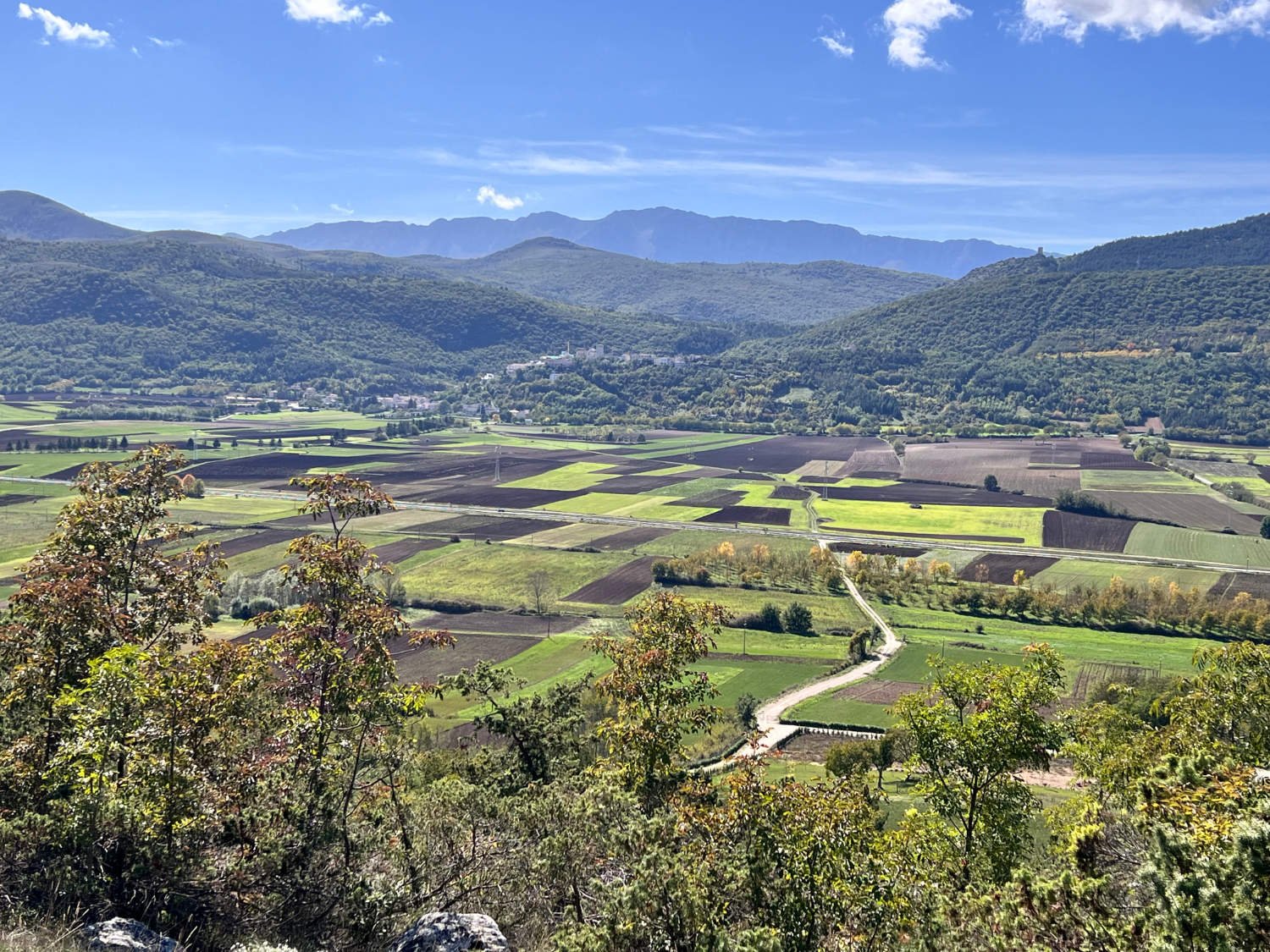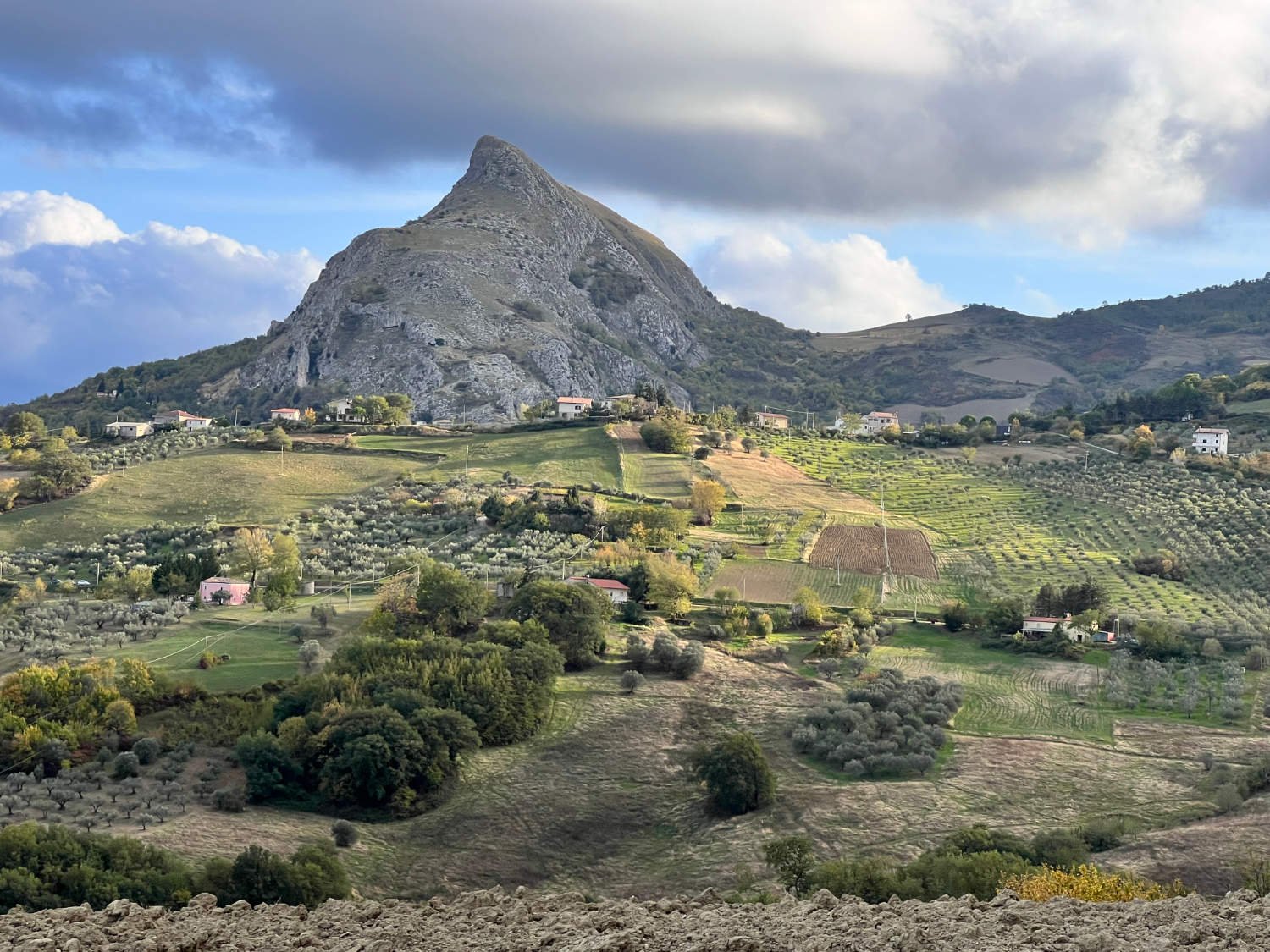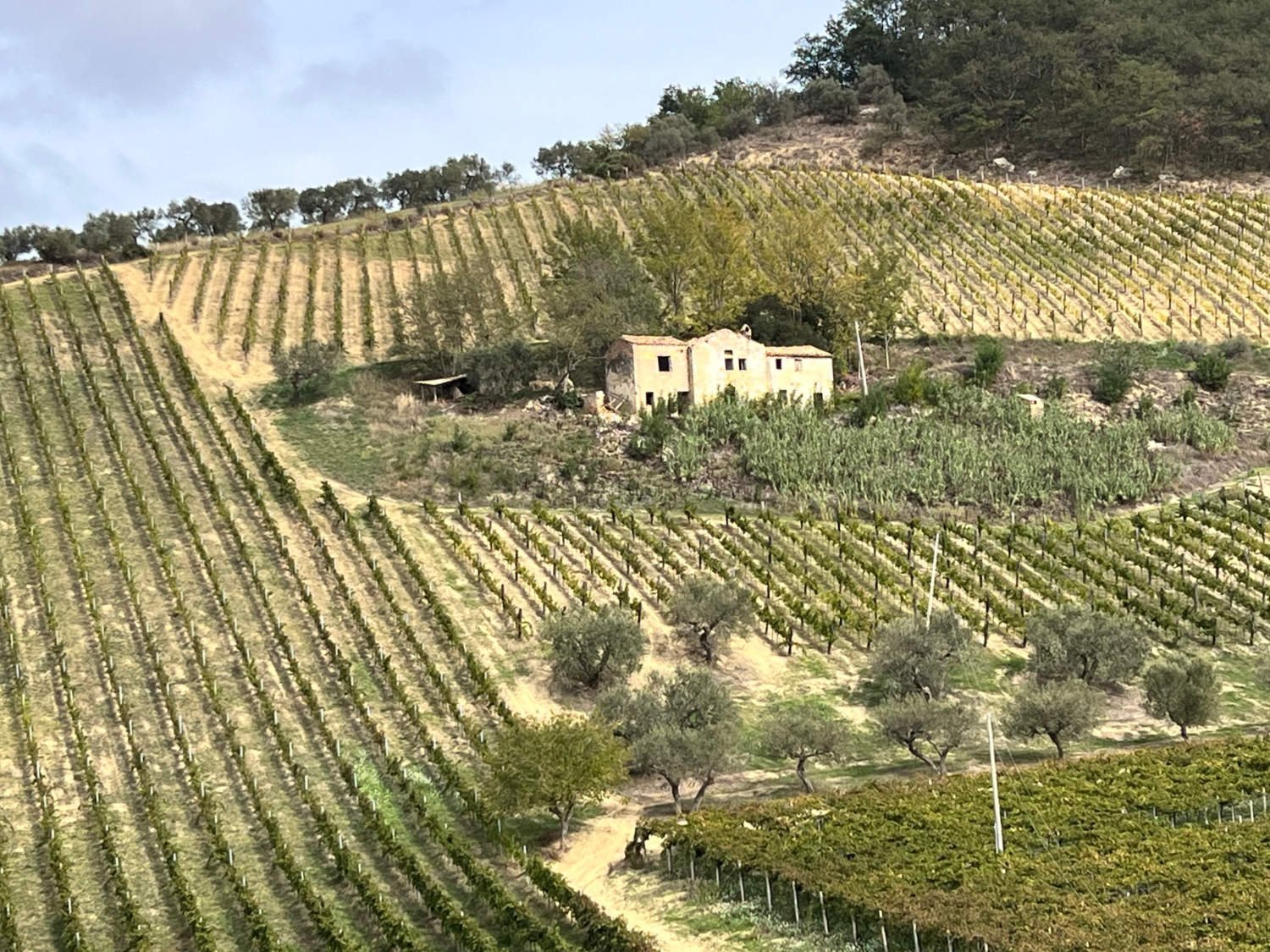300km Regio Tratturo
Via Claudia, Tratturo Regio Magno
Ride overivew
This is an adventure that’s only possible in a certain kind of Italy; where there’s ruggedness and wildness and where nature, rather than man, is the artist. The tratturo is one of Europe’s oldest roads, as well as the longest and oldest transhumance track in Italy. When the Romans laid their stones upon some of its length, the track was already a thousand years old. The largely off-road ride takes you from the high mountains of the Apennines down to the lush vineyards of Chieti, and from the sea to the waves of grass and grain of Molise, before finally arriving amidst the olive groves of Puglia’s great plain, the Tavoliere di Puglia. There are passes and many hills to climb (and push) over, there are wolves and bears to avoid. And this being Italy, there are historic towns to rest in, and of course there’ll be memorable dishes to eat. It’s not an easy ride, but for those looking for an adventure beyond the familiar, this four day immersion into a beautiful, and at times austere land, is truly unforgettable.

























Ride practicalities
START/FINISH: L’Aquila; Basilica di Santa Maria di Collemaggio/ Foggia; Epitaph of Foggia, DISTANCE: 316km TOTAL ASCENT: 4500m TERRAIN AND SURFACES: Quiet rural roads. A very significant part of the ride is off-road - far more than the RidewithGPS Map indicates. with a lot of earth and gravel tracks. There are sections of hike-a-bike up some of the hills RECOMMENDED ACCOMMODATION*: L’Aquila; Il Palazzo del Pavoni, Vasto; Casa Ocra, RECOMMENDED FOOD/DRINK: L’Aquila, Formø, Capo d’Acqua; Il Bosso, Vasto; Hostaria del Pavone, San Severo; La Fossa del Grano, Foggia: La Kucina MAINLINE TRAIN SERVICES: L’Aquila, Chieti, Vasto San Salvo, Foggia LINKS TO OTHER RIDES: The Gran Sasso
*Only places which meet WMWG criteria (Comfort, fairly priced with some panache which sets them apart from the ordinary) are listed. For other suggestions use your preferred App, e.g. Booking.com etc
Ride Notes
For a city surrounded by mountains and well off the so-called beaten track, L’Aquila is pretty easy to get to. It’s served by a motorway linking Rome in the west and and Pescara in the east, both of which are easily accessible by plane from the UK. There is too, a frequent if slow, train service from both the two cities on which there’s plenty of space for bikes, which travel free.
bikes on Italian regional trains
The tourist blurb will have you believe that L’Aquila is a city of 99 fountains. Ninety-three of those fountains are found at the Fontana delle Cannelle, where according to tradition, the spouts represent the 99 castles and fortified settlements surrounding L’Aquila which took part in the foundation of the city in the 13th century. For much of its history, the Cannelle has served as a laundry where the women of the town hand-washed their household’s clothes. Much of L’Aquila has been rebuilt after the 2009 earthquake and today its palazzi and old medieval streets, gleam. The whole of the centro storico is pedestrianised and, this being Italy, there are innumerable places to visit including the duomo and the Aragonese castle (where Europe’s largest and most intact mammoth skeleton resides). There are as in all Italian cities, plenty of choice for food and drink, with Formø, being the recommended place for gastronomes.
Shepherds, prior to setting off would have attended at least one, if not three masses in their local village churches up in the mountains. You may choose to do the same, or perhaps you’ll just make your way to the outskirts of town to the Basillica di Collemaggio - the Church of Forgiveness - where Abruzzo’s only Pope is buried. The large green outside the church is the traditional starting place for the most important, as well as the longest of all the Italian tratturi; Tratturo Regio Magno (also known as the Tratturo del Re).
Via Claudia
Heading out of town, you are almost straight onto the old sheep track which runs between a railway and fields, across which are delightful views of mountains burning purple-grey. There are rises - one of which is where you’ll have your first hike-a-bike, (but it’s short) and then you’ll be on the old Roman road, the Via Claudia Nuova. The tratturo passes through the remains of Peltuinum, an old Roman town and onwards to Navelli, the first fortified town (borgo)on the route. The castle and medieval stepped-streets are well worth a wander. Then it’s up and over another ridge, across another plain which is famed for its saffron production. It is on this section as well as on virtually the whole route, impossible to get lost - the track, millennia in the making is rule straight and clearly defined.
Chieti
The Forca di Penne is the only major pass (990m) of the trip and once over that, you head down to the coast on some fun farm tracks that bounce around, over and round the many hills, to Chieti. You don’t have to go to Chieti - it’s not on the tratturo - but it’s a town with the usual Italian town stuff - Roman amphitheatres, super museums, pedestrianised streets with shiny limestone slabs, duomos, good food etc., etc. One thing to bear in mind as you approach any of the towns on the route, that the traffic increases markedly. Having spent the day off-road without being bothered by a vehicle, arriving in towns requites a step up in alertness. Should you opt to be like the shepherds and sleep out (which is illegal but perfectly possible providing you’re discreet), miss out the deviations I’ve mapped into the towns.
Hills and vines of Chieti province
The ups and downs on old farm tracks continue on day 2, which after rain can become almost unrideable. Some of the hills through the vineyards are impossibly steep, (sheep don’t ‘do’ bends up a hill, they just head straight on up) which means that there are some hike-a-bike sections during the day. And thank goodness that there, as it allows you time to enjoy the richness of the vineyards framed by the back drop of the Maiella massif. Ride in the autumn and the area is as colourful as Joseph’s Amazing Technicolour Dreamcoat. Once you arrive in the old market town of Lanciano, most of the second day’s climbing is done. Instead, there’s the beach and the sea to look forward to. The Adriatic retains its warmth well into late autumn. On this stretch of coast, you’re free of the row upon row of beds and umbrellas which scar so much of the Italian seaside - here it’s a wilder Adriatic that welcomes you. The second day ends in Vasto - where there is a memorable restaurant (Hostaria del Pavone), along with great coastal views, and of course, a castle, a palace or twenty, a duomo etc., etc.
One of the really appealing aspects of this route, is that each day, the landscape is totally different from the previous ones. Day 3 takes you into Molise with its gentler hills of grain and grass. The sky is bigger, the horizons more immense, the solitude more pronounced. In spring the fields are carpeted in wild flowers. The track is as ever, very clear and you’d have to work hard to get lost.
Once you’re out of Vasto and its environs, there are no more towns or re-fuelling points along the route. This was a challenge as much for the shepherds as it will be for you. They negotiated with the contadini (rural peasants) for food and water in return for cheese on their return in spring. The farmhouses are all but deserted today, giving an extra melancholy air to the ride and the only way to re-fill your bottles or re-fuel your stomach is to leave the tratturo and head up to one of the hill top towns you see thinly scattered across the countryside. San Martino in Pensilis, is about half way and is notable for its Albanian population. The Albanians have lived here as well as in other Molisani towns since the 15th century. Their language as well as their customs, are protected in Italian law.
Il Tratturo Regio Magno
The riding is testing with the constant ups and down, but it is extraordinarily wild and beautiful and far cry from any of the more manicured landscapes so often associated with Italy. There are more buzzards, kites and hawks than people.
Towards the end of the day, you arrive on the Tavoliere di Puglia (sometimes written as Tavoliere delle Puglie). Here you ride between the old markers which bordered the tratturo. Laws passed in 1447 and enforced through to the end of the 19th century dictated that the tratturo had to be 111m wide, (66 Neopolitan paces). Here, as you approach San Severo the full width of the track is very evident. Grass gives way to a a veritable sea of olives, which with their twisted trunks and grey-green leaves seem somehow to be more alluring than other agro-industrial monocultures. San Severo has been by-passed the tourist trail which makes it all the more pleasant. It’s centro storico, a Baroque jewel of a place albeit somewhat run down, is very charming. Your hunger can be assuaged at La Fossa del Grano.
Perezana olives
It will be hard to believe as you ride over the Tavoliere that it was once a prairie which was protected by law, from Roman times to the early 19th century. from any form of agriculture other than sheep grazing. Nowadays, the Tavoliere is the food basket of Italy; enormous fields of artichokes, fennel, tomatoes, cabbages, asparagus and all manner of other vegetables are grown. There is not a blade of grass to be seen. There was no formal end to the tratturo for the shepherds once it had passed San Severo. Rather they would have headed out across the sea of grass to an agreed pasture where they would have spent the winter. What few records remain of the 2-3,000 year old transhumance, suggest that the shepherds found the Tavoliere desolate and depressing. Today, there’s a strange beauty to this industrial landscape of giant fields, windmills and broken roads.
The riding, until the outskirts of Foggia is on road, not that ‘road’ will fit with your image of what a road should look like. In the main you ride on gravel tracks, which is very appealing; they are fast and easy to ride on.
Unlike the old tratturo, the modern incarnation has a definite beginning as well as end. The Epitaffio di Fioggia is a curious hexagonal column which is surmounted by Philip IV King of Spain, who was also King of the Two Sicilies. It was he who codified and enforced the laws of the tratturo, such as the width and the banning of any other agriculture on the Tavoliere. Whilst no shepherd nor sheep would have come this far into town, it is where your adventure ends.
Each day with its highlights, dedicated map and suggested places to eat and sleep can be found by clicking on the images below.
Every route on this website has been carefully researched as well as ridden. However situations on the ground can change quickly. If you know of changes to this route, or cafes, pubs and the like which you think other cyclists need to know about, feel free to share your thoughts below.
If you enjoyed this guide, why not subscribe to the website so as not to miss other inspirational routes?
wheremywheelsgo.uk is a Feedspot UK Cycling top website











100km Stage 1